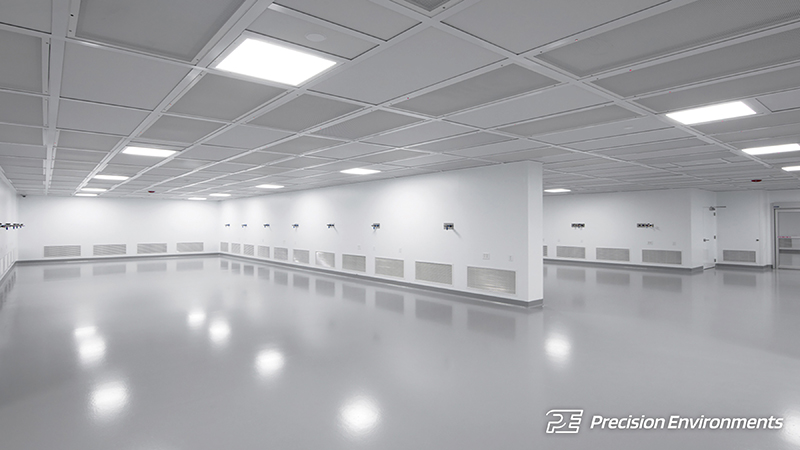A Reference Point for Cleanroom Classifications
When it comes to creating a cleanroom environment, one of the fundamental questions that arises is, which ISO 14644-1 standard should be adopted? These standards, ranging from ISO 1 to ISO 9, dictate the maximum allowable particles per cubic meter, with particle sizes ranging from 0.1 µm to ≥5 µm. However, understanding these classifications requires more than just numbers and ranges; it demands a real-world perspective on particle sizes and contamination sources.
To start, a micron (µm) is incredibly small at about 1/25,000 of an inch. The smallest particle visible to the human eye is ~25 µm. To put it into perspective, the diameter of a single strand of human hair is 70 µm in diameter. Using this as our reference point, we can better comprehend the sources of contamination that produce particles within the ranges most commonly referenced in ISO 14644-1 (≥0.3 µm or ≥0.5 µm). These include microorganisms and their spores, chemicals, human skin cells, tool and equipment contamination, packaging materials, garments and personal protective equipment (PPE), raw materials and components, as well as water and moisture.
With this understanding in mind, let’s dive into the most common ISO cleanroom classifications and their implications for different industries:
ISO Class 4 Cleanrooms: Of the more common ISO classifications, these are the most stringent environments, allowing fewer than 352 particles per cubic meter that are ≥0.5 µm. They are implemented in critical areas for industries like semiconductor manufacturing and nanotechnology where even minor contaminants can lead to significant defects or inaccuracies.
ISO Class 5 Cleanrooms: Slightly less stringent than ISO 4 cleanrooms, these cleanrooms permit less than 3,520 particles per cubic meter that are ≥ 0.5 µm. They are used in pharmaceutical manufacturing, medical device assembly, and electronics assembly, ensuring high cleanliness standards for product integrity and patient safety.
ISO Class 6 Cleanrooms: With a maximum of 35,200 particles per cubic meter that are ≥ 0.5 µm, ISO Class 6 cleanrooms are suitable for industries such as optics manufacturing and aerospace. Though less strict, they maintain controlled environments through robust filtration and contamination control measures.
ISO Class 7 Cleanrooms: Allowing up to 352,000 particles per cubic meter that are ≥0.5 µm, these cleanrooms cater to industries like food processing, pharmaceutical manufacturing, and medical device manufacturing. Diligent cleaning protocols and monitoring are essential to maintaining this level of cleanliness.
ISO Class 8 Cleanrooms: ISO Class 8 cleanrooms tolerate up to 3,520,000 particles per cubic meter that are ≥0.5 µm. While less critical, they still play vital roles in packaging, warehousing, and certain industrial processes where cleanliness remains important.
Room Air: To put the ISO classifications into perspective, standard room air has more than 35,000,000 particles per cubic meter that are ≥0.5 µm.
Comprehending cleanroom ISO classifications is pivotal for industries prioritizing cleanliness. Each classification level corresponds to specific cleanliness standards and caters to different applications based on cleanliness requirements. Whether it’s the ultra-clean environment of an ISO Class 4 cleanroom or the more lenient standards of an ISO Class 8 cleanroom, adherence to these classifications ensures product and process integrity across diverse industries.
When constructing a cleanroom and establishing operational processes, it’s crucial to consider not only the ISO classifications but also the real-world implications of particle sizes and contamination sources. By doing so, industries can ensure the highest standards of cleanliness, thereby safeguarding their products and processes against potential defects and inaccuracies.
Jeff Meek
Regional Sales Manager
Recent Posts
Precision Environments, Inc.
Corporate Headquarters
4440 Lake Forest Drive Suite 120
Cincinnati, OH 45242
Phone: 513-847-1510






